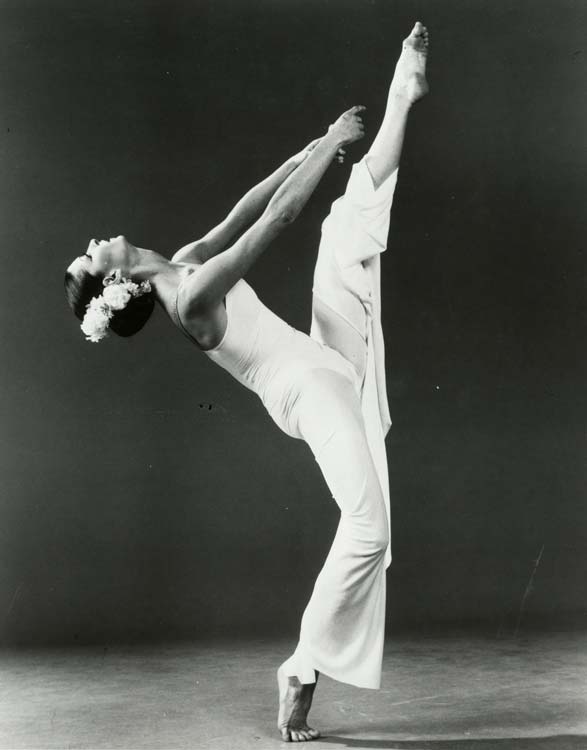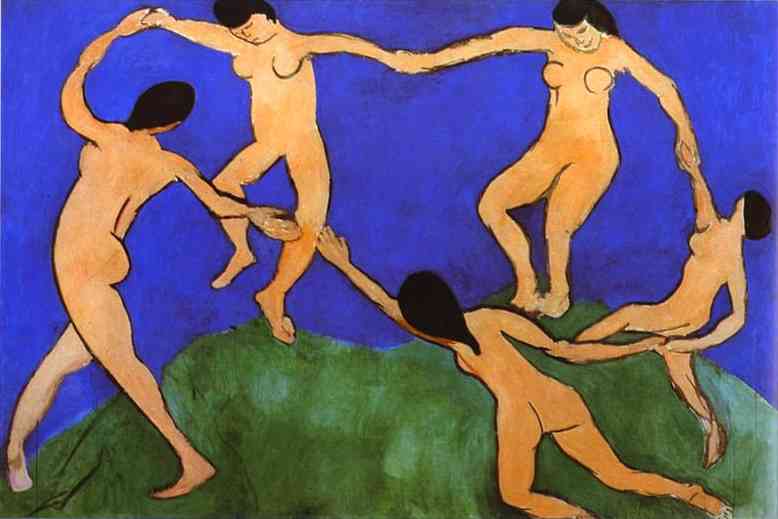Martha Graham
 Martha Graham was an American dancer and choreographer regarded as one of the pioneers of modern dance. She is widely considered one of the greatest artists of the 20th century. She created a modern dance technique (The Graham Technique), choreographed more than 150 works during her life, and has had a remarkable impact on the entire field of modern dance.
Martha Graham was an American dancer and choreographer regarded as one of the pioneers of modern dance. She is widely considered one of the greatest artists of the 20th century. She created a modern dance technique (The Graham Technique), choreographed more than 150 works during her life, and has had a remarkable impact on the entire field of modern dance.
Graham invented a new language of movement, and used it to reveal all the feelings common to human experience. She danced and choreographed for over seventy years, and during that time was the first dancer ever to perform at The White House, the first dancer ever to travel abroad as a cultural ambassador, and the first dancer ever to receive the highest civilian award, the Medal of Freedom. In her lifetime she received honors ranging from the key to the City of Paris to Japan’s Imperial Order of the Precious Crown.
One of her quote:
“I have spent all my life with dance and being a dancer. It’s permitting life to use you in a very intense way. Sometimes it is not pleasant. Sometimes it is fearful. But nevertheless it is inevitable.”
Rudolf Nureyev
Rudolf Nureyev is regarded as one of the greatest male ballet dancers of the 20th century. Despite his late start, he was soon recognized as an incredibly gifted dancer. Nureyev worked hard, rehearsing for hours in order to make up for the years of training he missed. Under the tutelage of a great teacher, Alexander Pushkin, he blossomed. Pushkin not only took an interest in him professionally, but also allowed the younger dancer to live with him and his wife. Upon graduation, the Kirov and the Bolshoi both wanted to sign him. He continued with the Kirov and went on to become a soloist – extremely unusual for someone of his age and experience.
Unfortunately, Nureyev was one of the early victims of HIV, and died from AIDS in 1993. His grave was located at a Russian cemetery near Paris.
Svetlana Zakharova
 She was born in Lutsk, in the Ukraine. In 1989, she entered the Kiev Choreographic School. In Kiev, she trained with Valery Sulegina. Having finished the six years at the Kiev School, she took part in a young dancers’ competition: the " Vaganova-Prix" in St. Petersburg. Her phenomenal physique (extraordinary flexibility, big step, stability, stable rotation) caught the attention of judges. She won the second prize and received an invitation to join the graduating course at the Vaganova Academy of Russian Ballet. In 1996, Svetlana graduated from the Vaganova Academy and the same year she was accepted in the theatre’s company and in the following season was promoted to principal dancer.
She was born in Lutsk, in the Ukraine. In 1989, she entered the Kiev Choreographic School. In Kiev, she trained with Valery Sulegina. Having finished the six years at the Kiev School, she took part in a young dancers’ competition: the " Vaganova-Prix" in St. Petersburg. Her phenomenal physique (extraordinary flexibility, big step, stability, stable rotation) caught the attention of judges. She won the second prize and received an invitation to join the graduating course at the Vaganova Academy of Russian Ballet. In 1996, Svetlana graduated from the Vaganova Academy and the same year she was accepted in the theatre’s company and in the following season was promoted to principal dancer.
She has been performing the most famous characters of the repertoire, among which: Giselle, Juliet, Medora (Le Corsaire), Princess Aurora (The Sleeping Beauty), Odette, Carmen, Hyppolita (A Midnight's Summer Dream).
Roberto Bolle
 Roberto Bolle discovered his passion for dance when he was very young. He began studying in Piedmont, his region of origin, until the age of 12 when he entered the Ballet School of La Scala Theatre in Milan. When he was only twenty, Roberto gave his first performance as Romeo. The following year in July, performing the same role, he was promoted to Principal by Elisabetta Terabust which led to a huge international career. Roberto performed Sigfried for the first time with the international star Altinai Asylmuratova at the most impressive English concert hall in a huge new production by Derek Deane, which included 70 swans, acrobats and jugglers.
Roberto Bolle discovered his passion for dance when he was very young. He began studying in Piedmont, his region of origin, until the age of 12 when he entered the Ballet School of La Scala Theatre in Milan. When he was only twenty, Roberto gave his first performance as Romeo. The following year in July, performing the same role, he was promoted to Principal by Elisabetta Terabust which led to a huge international career. Roberto performed Sigfried for the first time with the international star Altinai Asylmuratova at the most impressive English concert hall in a huge new production by Derek Deane, which included 70 swans, acrobats and jugglers. For the first time the young Italian artist, just twenty-two, met some members of the Royal Family such as Princess Margaret and the beautiful and unforgettable Lady Diana. in 2002 the United Kingdom and the entire British Commonwealth celebrated Her Majesty Queen Elisabeth’s Golden Jubilee. The highlight of the celebration was held on Saturday 1st June and was a great event at the Royal Palace.
Roberto, the only Italian artist invited, performed the Black Swan pas de deux with Zenaida Yanowsky in the fabulous setting of the throne room at Buckingham Palace.In June 2007, Roberto Bolle was the first Italian dancer to be invited to the Metropolitan Opera House in New York. His performances in Manon and Romeo and Juliet were highly praised. His partner, Alessandra Ferri, was at the top of her career and performed her farewell performance at the MET.
The 30 minutes of applause, a standing ovation and enthusiastic newspaper reviews declared the next chapter in Roberto’s international success.










